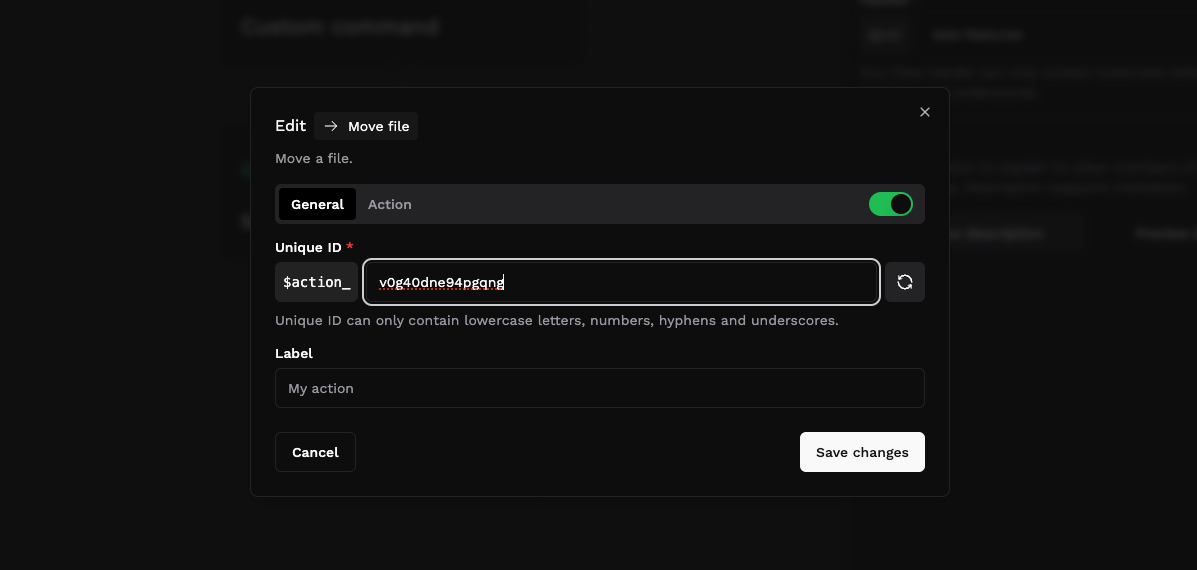Node types
While creating or editing a flow, you will be faced with different node types. All nodes have different purposes and perform different tasks.
As mentionned in the previous page, there are 4 types of node available for you to use :
- Action nodes
- Conditions nodes
- Join nodes
- Comment nodes
In this section you will learn about these nodes and how to use them at their full potential.
Important notes
All nodes except the Join node can only have a single source (top connector) and a single target (bottom connector)
Action nodes
Action nodes are used to perform the main tasks in your custom CLI. You can use them to create a directory or even clone a git repository. When adding/configuring an action, you will be met with this modal

Every have these 3 fields in common
- Status : The toggle on the top right corner. Use this toggle to enable/disable your action.
- Unique ID : Used to identify your action when using it as a variable.
- Label : Used to give your action a custom name.
You can now go ahead and switch to the "Action" tab to configure your action. Each actions have different fields in this tab.
Conditions nodes
Conditions are nodes used to create conditions based on Input type action nodes.
When creating a conditions nodes, you will first need to select its mode :
- kill : Kill process if conditions are not met
- if-else : Run other nodes if conditions are not met
You will then be able to add one or more conditions groups. Groups are OR conditions, containing AND conditions.
Join nodes
Join nodes are used to merge multiple Node connections into one. This node is useful when your flow has multiple conditions routes that need to regroup into one Action node.
This node is the only node which can have multiple source (top connector).
Comment nodes
Comment nodes are purely visual. They do not have connectors, nor have an impact on the execution of your flow.
You can use comments to explain a group of nodes or anything you want really.
